Unlock the Magic in Your Story Now
Get the Free 20 questions to Ask Before Launching Your Idea workbook when you sign up for occasional updates.
Get the Free 20 questions to Ask Before Launching Your Idea workbook when you sign up for occasional updates.
Articles filed in: Storytelling
What Does This Advertising Do?
filed in Marketing, Storytelling, Strategy
 It’s easy to erect a billboard that broadcasts to everyone—far harder to build a bridge to meaningful engagement with the people who matter.
It’s easy to erect a billboard that broadcasts to everyone—far harder to build a bridge to meaningful engagement with the people who matter.
If it’s not helping you to get closer to your customers then it’s not worth doing.
Image by Daniel.
Two Ways To Market
filed in Marketing, Storytelling, Strategy
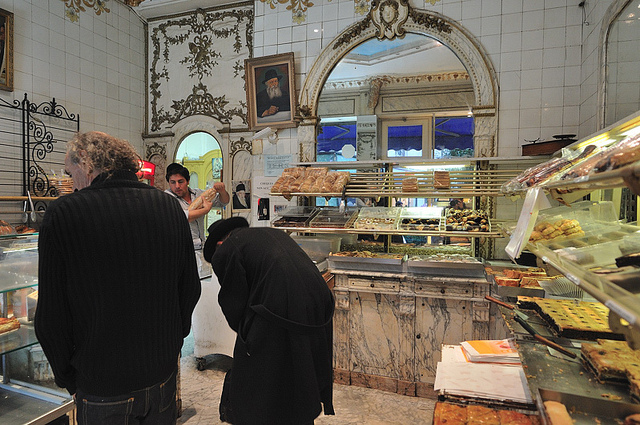 Which marketing is more effective?
Which marketing is more effective?
“Let me tell you about our best ever chocolate cake. All of the ingredients are sourced locally.
The butter is hand churned from the milk of Brown Swiss cows and the eggs were freshly laid this morning. We use fair trade organic cacao and the finest quality Belgian dark chocolate.
Our signature cake takes longer to make because of the triple sifting process we use, that creates a moist, melt-in-the-mouth sponge. It is finished with a rich chocolate ganache and hand shaved white chocolate and is guaranteed to change the way you think about chocolate cake forever.
You’ll love it!”
OR
“Tell me more about your birthday party guests…”
We can talk about our excellence and hope that people will listen, or we can simply be excellent and give them a story to tell. Our best marketing is in the listening and doing, not the telling.
Image by Guillermo Fdez.
Your Best Offer Advantage
filed in Marketing, Storytelling, Strategy
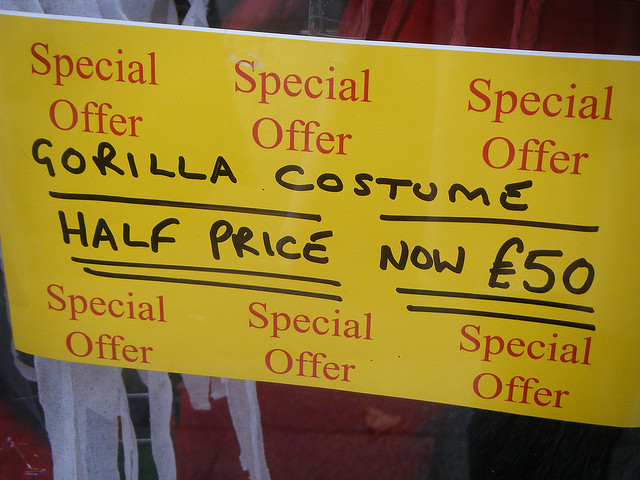 While working on my next book I was considering commissioning some independent research. Following a Skype conversation with a representative from a global research firm, where the investment seemed way outside my budget I received “some great news for in the form of a quote!”
While working on my next book I was considering commissioning some independent research. Following a Skype conversation with a representative from a global research firm, where the investment seemed way outside my budget I received “some great news for in the form of a quote!”
The consultant had spoken to a colleague and had called in a “personal favour”. I could now access an all caps, FREE trial license and gather up to the 800 responses needed for statistical significance. The cost to me— just $5,000 (significantly less than the verbal quote), the caveat being we needed to bill the project by the end of the month.
Nine days after the end of month deadline I got another email saying that he wasn’t sure we actually needed 800 responses after all, and that with just 385 completed surveys we could gather data with a 95% CI and .05 margin of error. This would cut the cost of the project in half.
I could be done and dusted for $2526.
By now it was very obvious how the sales consultant was motivated and rewarded. He must close the sale by any means possible, but not by bringing the highest value the company had to offer to the table until he had no choice. It must be hard to get up and bring yourself to work every day if your job is to convince people to pay the most possible for the least amount of effort.
Maybe this is what it takes to survive in the 21 billion dollar market research industry? But when you reach the point where you’ll do almost anything to close the deal then it shows.
There isn’t a single customer on the planet who wants to feel like they were closed, and another 7.3 billion and counting who want to be made to feel like they matter—that we did our best by them in every sense of the word.
Image by Daniel Weir.
The Win Loss Mindset
filed in Marketing, Storytelling, Strategy
 Trade shows are interesting. You pay for the opportunity to set out your stall and market your wares to a generic, gender or interest demographic. It’s a game of hope and pitch, with a lot of waiting and rejection in between. For every person who buys something another ten walk past—unmoved and uncaring. Clearly not the right people.
Trade shows are interesting. You pay for the opportunity to set out your stall and market your wares to a generic, gender or interest demographic. It’s a game of hope and pitch, with a lot of waiting and rejection in between. For every person who buys something another ten walk past—unmoved and uncaring. Clearly not the right people.
And yet, as marketers we spend the majority of our time, energy and resources working out how to convince the ones who walked away, instead of putting all of our effort into obsessing over what resonated with the 1% who bought into the story.
It’s far easier to tell a story to people who want to listen.
Of course the Internet is a trade show on steroids.
The same rule applies wherever your story is told.
Image by Kevin Dooley.
The Characteristics Of Beloved Brands
filed in Marketing, Storytelling, Strategy
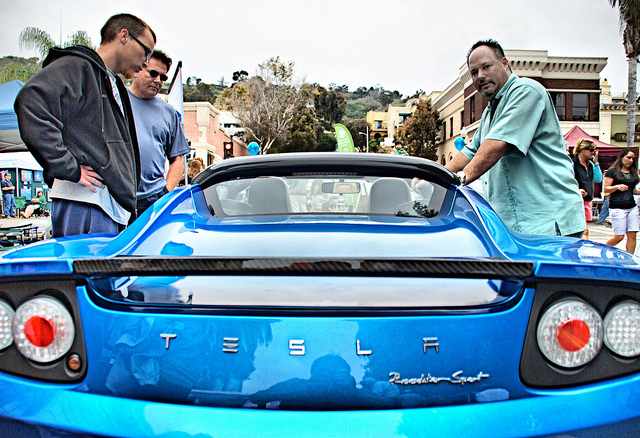 Earlier this week Bob Lefsetz wrote the following line in a post about Elon Musk;
Earlier this week Bob Lefsetz wrote the following line in a post about Elon Musk;
“We know greatness when we see it, we clamor for it. We want to get closer to it.”
We also want to emulate it—to understand the qualities and characteristics that elevate certain leaders, businesses and brands above the rest. Analyse any brand that garners loyalty and love and you’ll find they all have these things in common.
The Characteristics Of Beloved Brands
Only five…
1. A muse.
Someone with a particular worldview, a desire, need or problem that they care about creating a difference for.
2. A visionary leader(s) who acts as a sherpa.
An individual (or a group), who knows what change they want to create in the world, and who stands up and says follow me.
3. A purpose.
A common vision.
4. A team with passion and skill who believe on executing on the vision.
People who will take the people they serve where they want to go.
5. A great product or service that marries the worldview, wants and needs of the muse with the company’s vision and purpose.
It turns out that great products are born from caring about the people they are for.
Image by Wendell.
Marketing Is How It Feels
filed in Marketing, Storytelling, Strategy
 In a recent article I read that “….aside from a few television spots and billboards here and there, Apple pretty much ignores marketing and advertising.”
In a recent article I read that “….aside from a few television spots and billboards here and there, Apple pretty much ignores marketing and advertising.”
This is simply not true. EVERYTHING Apple does, from the massive investment in package design that creates scissorless, video-worthy unboxing experiences, to product names, Genius training, years spent obsessing over every detail of a new product, glass staircases and Macbook screens angled so that you must touch them in order to interact with the product in store, is marketing.
Apple’s $1.2 billion spend on advertising (just 0.7% or their revenue) pales into insignificance when you consider the resources the company dedicates to creating meaningful products and experiences.
Marketing is neither medium or message, it’s how it feels to get close to your brand—which means everything that the customer sees, hears, tastes, smells and experiences (not just your advertising budget) is your marketing.
It really is time to stop confusing the two and to remember that now more than ever before, great advertising can’t and won’t rescue a mediocre product or experience.
Your brand story is not just something you say. It’s all that you do.
Image by Rob Boudon.
The Business Of Enough
filed in Marketing, Storytelling, Strategy
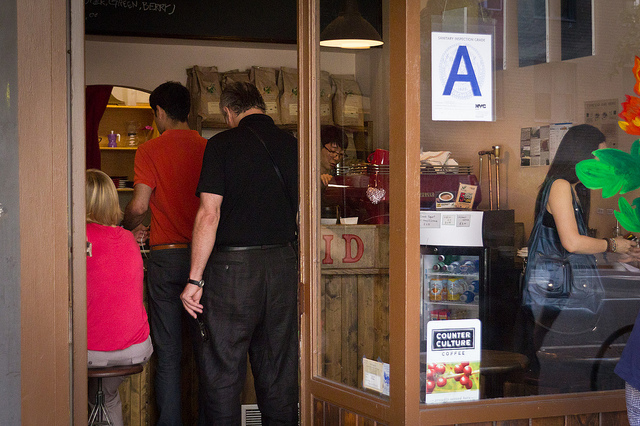 There’s a tiny cafe in Midtown with room for exactly three people to stand up inside. They open from 7 until 5 on weekdays and close at 3 on weekends. The two staff working behind the counter are always smiling and engaged. They clearly love what they do.
There’s a tiny cafe in Midtown with room for exactly three people to stand up inside. They open from 7 until 5 on weekdays and close at 3 on weekends. The two staff working behind the counter are always smiling and engaged. They clearly love what they do.
Lucid doesn’t have a website or another branch across town. What it does have is a reputation to be proud of, a sustainable business model, staff who care and customers who would miss them if they were gone.
This is no Starbucks. There is no grand expansion plan, no eventual IPO. Of course it’s quite possible that the team at Lucid could leverage what’s working to scale and serve more customers, the risk is that they might lose some of the magic.
It’s tempting to seek growth for growth’s sake, and worth noting that sustainable growth requires three things—a reason to make it work (preferably the right one), a plan to make it happen and a way to keep both you and your customers happy as you go.
The magic of just enough is often underrated.
Image by John Gillespie.
How To Be Valued In Any Marketplace
filed in Marketing, Storytelling, Strategy
 Mike is ‘in sales’. He takes care to dress well, to tone down his tie and give a firm handshake. He begins every conversation with a prospective client by first introducing himself and then sharing his perspective about why he’s there. It’s no surprise that Mike is met with hundreds of rejections each year from people who don’t immediately understand the value he creates for them.
Mike is ‘in sales’. He takes care to dress well, to tone down his tie and give a firm handshake. He begins every conversation with a prospective client by first introducing himself and then sharing his perspective about why he’s there. It’s no surprise that Mike is met with hundreds of rejections each year from people who don’t immediately understand the value he creates for them.
A better place for Mike to start is by asking two questions:
Tell me what do you do now. What do you want to do?
Our work becomes valuable when it is valued, and people can’t value something they don’t understand. It turns out that the best way to be understood is first to understand.
Image by Thomas Hawk.
The Spotlight
filed in Marketing, Storytelling, Strategy
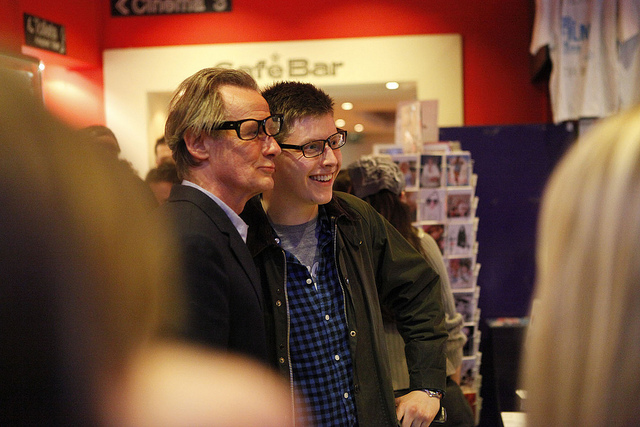 I went to see Bill Nighy and Carey Mulligan perform on Broadway last week.
I went to see Bill Nighy and Carey Mulligan perform on Broadway last week.
What was interesting to observe was how little most people in the audience were enjoying the act of ‘going to see Bill Nighy and Carey Mulligan perform on Broadway’. There were complaints about the fact that they doors didn’t open early enough. A lot of whining about the lack of adequate toilet facilities for the ladies. Annoyance at having to stand up when the stragglers arrived late and needed to get into the middle of the row. Grumbles about the comfort of the chairs and loud gasps when a phone began to ring mid-performance (agreed on that one, it must be very frustrating for the actors). Two ladies in my row even dosed off for a bit during the first half. Did I mention it was a matinee?
The acting of course was superb, but you can watch Bill and Carey in some great movies from the comfort of your living room for almost free, no queuing required—so why go to the theatre at all?
The reason we pay with time, effort, inconvenience and money isn’t always for the experience, it’s for the story we get to tell. We all want to be in the spotlight like Bill and Carey at some point, even if we don’t acknowledge it and the price of admission is worth it to be able to say;
“I went to see Bill Nighy and Carey Mulligan perform on Broadway last week.”
How are you helping your customers to step into the spotlight?
Image by Edinburgh Film Festival.
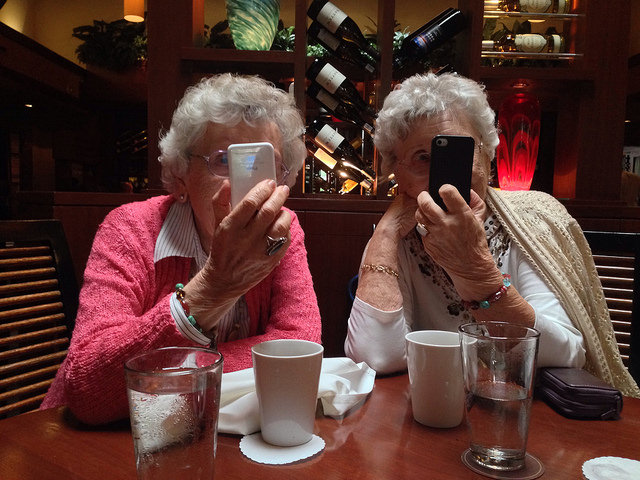 Consistent marketing…
Consistent marketing…